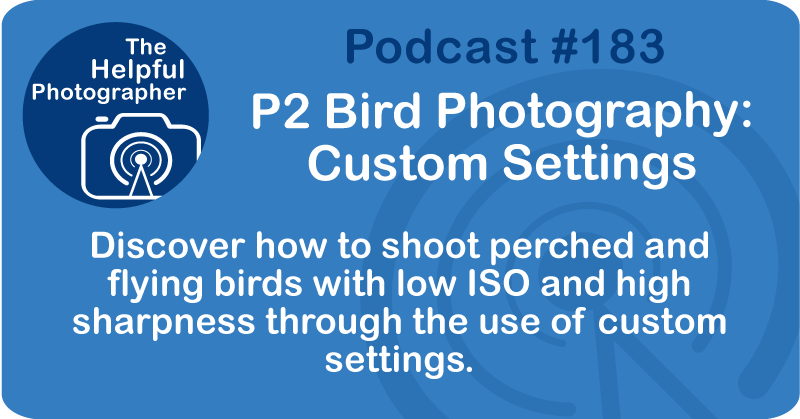P2 Bird Photography: Custom Settings #183

This is part two in a six-part episode about bird photography. In the last episode, we talked about why I recommend shutter priority with auto ISO for bird photography and why aperture priority will more often than not set you up for failure, especially with fast-moving birds. If you missed that one, you'll definitely want to go back and listen because today we're building right on top of it. So let's dig into shutter speed strategy.
And how I use custom settings in the field to get the best of both worlds: clean, low ISO shots of perched birds and sharp, high-speed captures of birds in flight. Let me take you back to Costa Rica for a minute. We were out photographing the resplendent Quetzal—again, one of the most beautiful birds you'll ever see. Most of the time, they'd sit quietly digesting their little wild avocados—no real movement—but then suddenly, off into the air they go.
Here's the challenge. If I left my camera locked at 1 over 2,000th of a second to be ready for flight, my ISO would shoot up to 20,000 or even 51,000 in the shade. Yes, today's cameras and software can handle that surprisingly well, but it's still noisy. And if the bird isn't moving, I don't need that speed. That's where custom settings come in. I've saved two setups on my camera. In custom setting one, I have pre-capture turned on, shutter speed set to 1 over 2,000th of a second, and high-speed drive mode. This is my action mode, perfect for birds in flight.
In custom setting two, I have no pre-capture, shutter speed closer to 1 over 500th of a second, and a slower drive mode. This is my perch mode—great for still birds, giving me clean, low ISO images. Here's how I would use my custom settings in the field. With the Ketzel, as we approached and set up for a shot, I start with custom one—the fast setup. I fired off a few frames as we got closer, just in case it took off early. If it did, I was ready. But if the bird stayed put and looked comfortable, I switched to custom two. That let me slow the shutter speed, drop the ISO, and capture really clean, sharp images. Once I had those in the bag, I switched back to custom one and waited. If the bird decided to leap in the air, I was already set for it.
This approach also saved me from shooting thousands of unnecessary high-speed frames of a perched bird just sitting there. For me, it was a cleaner workflow. Now, just a quick note—sometimes I even rolled the shutter speed all the way down to 1 over 250th of a second. That is, if the bird looked really comfortable and my lens stabilization was solid. That was a judgment call. But the point is, I could make that call quickly because of how I had set up the camera.
So the takeaway here is simple: use your custom settings. Save one for flight, save one for perched. Start fast when approaching a bird. You never know when it's going to fly or if you're the one who scares it into flying. Switch to the slow setting for perched shots to keep the ISO low and the quality high. And then switch back to the fast setting and wait for the action. It's a rhythm. Once you get into it, you'll be amazed at how much more consistent your results become.
All right, that's it for today. Next time, we're going to talk about everything we've talked about so far and apply it to one of the trickiest little birds out there—hummingbirds. We'll talk about how to anticipate their behavior, why I stick to super high shutter speeds for their wings, and when you might want to experiment with something slower for creative blur. Don't miss part three—it's all about mastering hummingbirds.











